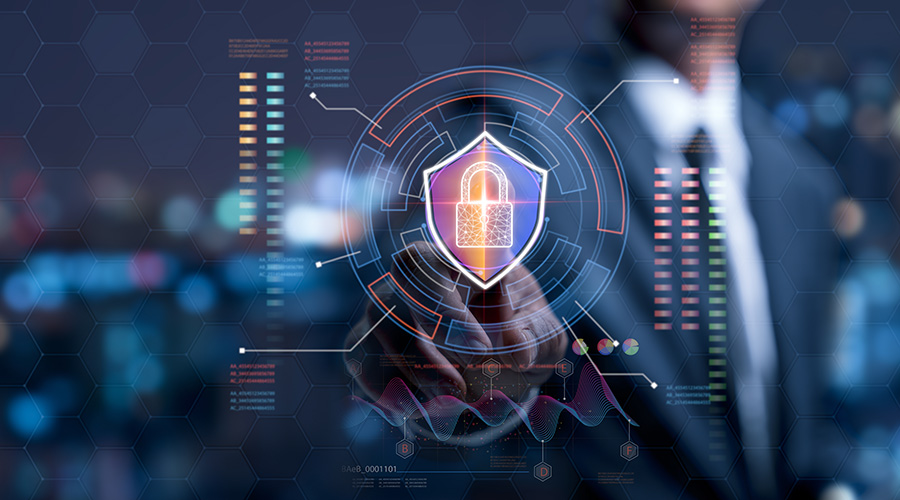Real Needs Must Drive Security Integration
Technology options have multiplied. To sort them out, operational requirements are the place to start
With wireless capabilities and computer systems, facility executives can monitor just about any type of system from anywhere. And that includes using a PDA to monitor a security system or to watch images from a video camera system — even from another state.
But now that this capability is available, what are facility executives going to do with it? Will a facility executive on a business trip return to respond to a security alarm condition? If a facility executive is watching video images on a wireless PDA, is anyone else doing the same? Can someone else open the door to a facility from a PDA, just as a facility executive can? Should the police be called on all security alarms or just when a certain condition occurs?
Technology can do many things, but it is not the exclusive answer for all security needs. Experience has shown that in the most solid security programs, technology is used to support operations. The key is to determine what needs to be protected and then develop a program that uses technology to complement security operations. Technology cannot replace an entire security staff. Technology is not yet intuitive enough to evaluate security conditions, identify offenders and make appropriate responses. Technology still needs to be managed, serviced and monitored.
Applying technology without careful consideration of operations has led, for example, to designs that have too many video cameras to be effectively monitored, access control systems that are not manageable and intrusion detection systems that have no staff to respond.
Integrating Subsystems
One important design concept that can help take advantage of technology is integration. While there are many systems, devices and software solutions in the security industry, most are stand-alone systems. There are many good access-control, video-camera and intrusion-detection systems, but all the solutions may not be available in a single package. Effective security system integration involves careful planning and design. The payoff can be improved security response to incidents.
One type of integration involves linking security subsystems. Many security systems offer both access control and intrusion detection components. There are some intrusion detection systems that are good but do not include access control, and vice versa. But the combination of both components in one system is easy to find. These access control and monitoring systems usually include a digital photo identification component as well. The photo identification systems allow photo images to be stored in the user’s database. Access control and monitoring systems provide a single solution for most simple security programs.
An access control system typically involves the control of a door, which is usually not a sophisticated design element. In many cases there are also requirements to integrate the system with elevator control, automatic door control and parking gate systems. Some of these are sophisticated software integration designs; others are hardwired designs.
Adding components creates a more sophisticated security system. Most access control and monitoring systems involve hardwired, closed communications loops between field devices, such as card readers, door position switches, motion detectors, glass break sensors and desktop computers or workstations used for monitoring the status of the system. These monitoring stations are also called graphical user interfaces because they can display the alarm conditions on a graphic display, such as a CAD drawing or even a photo of the building. There are integration designs that send the alarm conditions to pagers, PDAs and other wireless devices. This is helpful because some facility executives or security managers want immediate notification of specific security alarm conditions. They can have the information sent to their wireless device.
Another possible component is the video camera system. In the past, these were referred to as closed-circuit tele-vision or CCTV systems. However, with the use of video over the digital network, the signals are no longer a closed network. Video signals transmitted over a local or wide area network are potentially available to other network users and even to people on the Internet. This could raise legal considerations.
The integration of video systems with access control and monitoring systems is common. There are many levels of integration. One effective application involves programming the inputs/outputs or software rules to accommodate the association of access control alarms with specific video camera views. The result is that many video views can be suppressed until a specific alarm condition occurs. The video view is then called up on the workstation or a special video monitor.
It is important to note that not all video systems integrate equally with all access control and monitoring systems. Some have robust interfaces; others have no integration capabilities. Design professionals need to carefully review the integration requirements and determine the system capabilities on a case-by-case basis. Many legacy CCTV systems have limited integration possibilities.
Another security subsystem that can be integrated is the emergency call system. This is typically an intercom system with additional features such as an oscillating light. Common in parking garages, these systems when integrated can indicate an alarm condition, identify the initiating station on the access control and monitoring system, call up a video image on a video monitor and open an audio communications channel to talk with a person in the garage or other location.
Visitor management systems are becoming more sophisticated and popular. These systems are currently manufactured as stand-alone systems to enable building tenants to expedite the notification of expected visitors to the security office. Tenants can utilize Web-based technology to send a detailed message authorizing a visitor. The integration of this system with an access control and monitoring systems allows a card to be issued to the visitor that can track, control and record the visitor’s travel in the building as if he or she were a staff person, but within a limited time frame.
Special integration possibilities also exist. In a hospital, for example, infant monitoring systems can be integrated with video systems to allow video viewing of a location where an infant device is detected to be too close to an exit door. A simple infant monitoring system may only generate a local alarm, such as an audible siren or a flashing light. Add the integration to an access control and monitoring systems and the doors can be controlled in concert with special access control parameters. A card reader may still open the door and so will a fire alarm.
Asset monitoring systems can also be integrated. These systems monitor tags placed on assets of value. When the tag is detected, typically near an exit, the system can generate an alarm. Asset tags and access control cards can be associated to provide control of special assets with the appropriate owner.
Once several security systems are integrated into an efficient security program, it’s often referred to as a security management system. As implied by the name, a security management system is more than an alarm monitoring system. They are true management systems handling all of the security technology and information.
Linking Multiple Systems
Many access control systems got their start as an additional software capability of the building automation system. These systems have not gone away, but specialized access control and monitoring systems have really grown. It used to be a concern that all-in-one systems were merely adequate. There were also concerns that all security systems were part of one design.
Today, with a new focus on efficiency, integration with non-security functions has emerged. Whether it is an all-in-one building automation and security system, or separate systems integrated via software, security and building controls are frequently integrated. These integrated systems can control lights, HVAC and other environmental conditions.
There are many facilities that tie the use of the access or identification card with another type of card reader system that reads the same card, manages transactions for food, supplies and photocopies, to name a few possibilities. Some facilities, such as universities, integrate extensively. A network of integrated subsystems uses the student identification card to provide access to specific residence halls, check out books at a library, pay for meals and purchase books.
Fire alarm integration is critical in a facility. The control of a door for emergency egress cannot be impeded by the access control system. Some municipalities allow more sophisticated integration possibilities; others restrict the connection to an interface. Design professionals or consultants need to review the local codes and develop the design carefully in these situations.
Regardless of the type of integration, there are many benefits to linking systems. Improved efficiency, effectiveness and synergy are possible. Other benefits include installation cost savings, which can be achieved with the use of local and wide area networks to reduce cabling costs and the multiple use of graphical user interfaces to save hardware and operational costs.
Some types of integration are not possible. Generally, access control and monitoring systems are not capable of being integrated with each other. Most access control system manufacturers use proprietary code or language to protect their installed customer base, and this information is not usually shared. Thus, it is highly unlikely to see multiple integrated access control and monitoring systems.
Integration of legacy systems is also not always possible. Digital systems are easier to integrate, but the integration of older analog with new digital systems can be quite tricky and sometimes not worth the cost. The condition of the system, age of the system and level of required integration are all issues that affect the ability to achieve the desired integration.
Integration From the Start
Today, systems are being designed and developed with integration in mind. There are attempts to introduce open architecture into the security world. Building automation systems are leading this charge in their industry, with LonWorks or BACnet. Unfortunately, security system manufacturers have no compelling need to follow suit. They can protect their installed base by keeping their communications proprietary. Security system manufacturers write custom code to integrate with other types of security systems when they see a market opportunity. However, they write these for specific versions of systems and as new revisions are released they may have to be rewritten or the integration may not function as it did before. Thus, some upgrades actually degrade performance in integrated areas.
Facility executives and security managers need to be sophisticated enough to realize that there is no magic bullet or standard answer to the integration question. They should analyze each situation, determine the operational requirements and then determine what technology can be integrated to provide the appropriate support of the operations. It is recommended that a security consultant or designer be used to provide an independent analysis and, if appropriate, develop the design.
Lauris Freidenfelds is a vice president with Sako & Associates, Inc., a security, safety and communications consulting firm located in Chicago. He has more than 20 years of experience with security systems and programs.
Related Topics:











